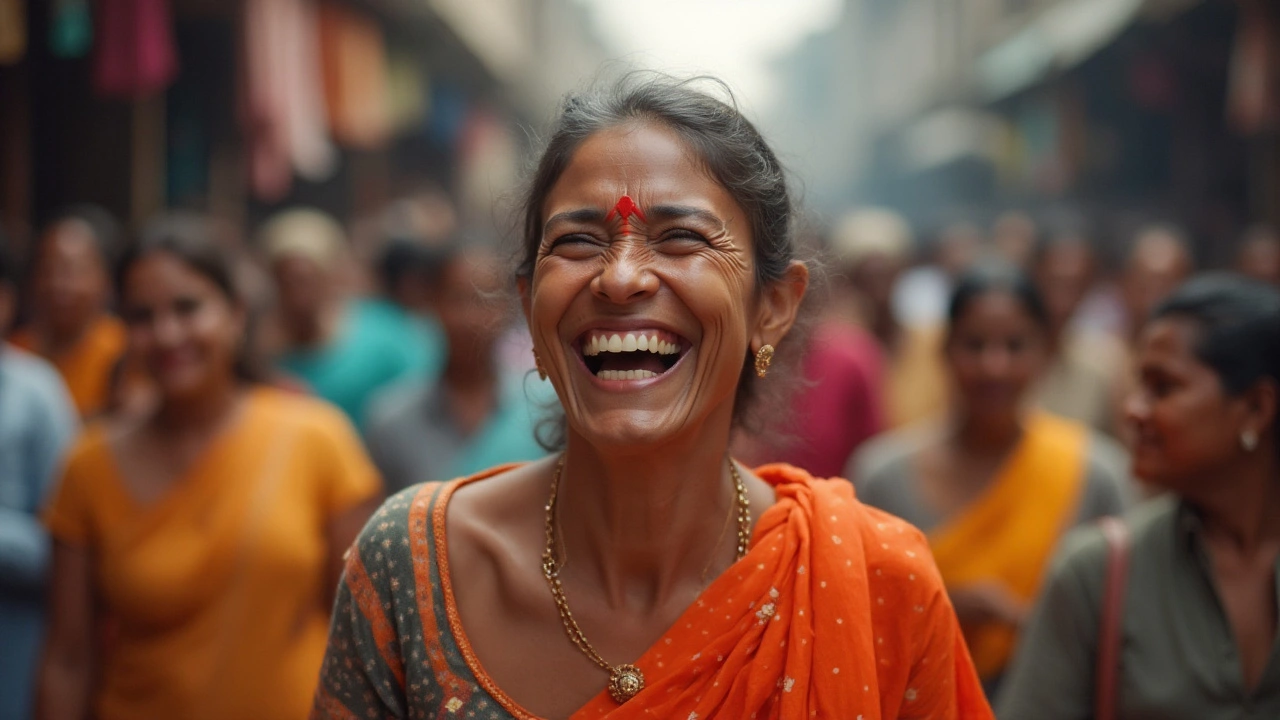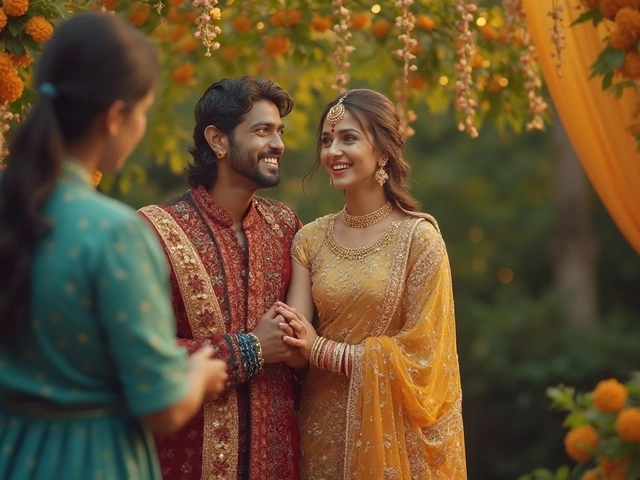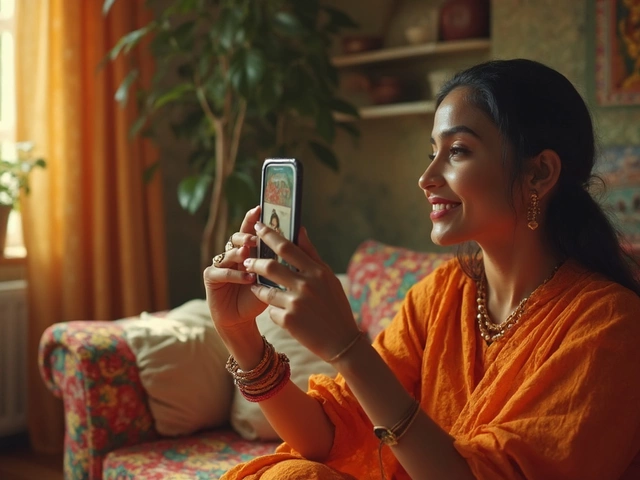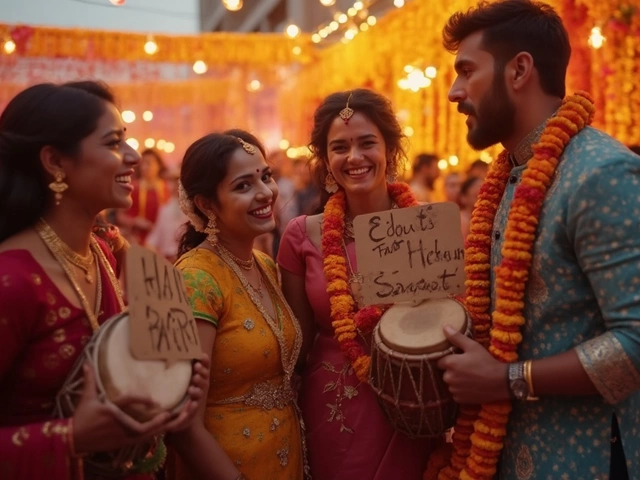In the bustling streets of India, candid photography thrives as an art form that encapsulates genuine emotions and moments as they unfold. Amidst the vibrant tapestry of daily life, the question arises: Are the naturally attractive truly more photogenic, or does their allure stem from more than just physical traits?
This article embarks on a thoughtful exploration of this idea, examining the cultural and scientific facets that influence photogenic appeal. We'll uncover the cultural nuances of beauty in India and how they translate to the lens. Along the way, discover practical tips to seize those captivating moments that reveal the heart and soul of authenticity.
- Defining Photogenic Qualities
- Cultural Perceptions of Beauty in India
- The Science Behind Attractiveness and Photography
- Tips for Capturing Alluring Candid Shots
- Embracing Authentic Beauty in Photography
Defining Photogenic Qualities
When we talk about photogenic qualities, it's essential to first understand what it means to be photogenic. In essence, being photogenic implies that a person appears naturally appealing or aesthetically pleasing in photographs, often regardless of the context or setup. But this concept is not just about having perfect features. It involves an interplay of various elements, such as lighting, angle, and the subject's comfort in front of the camera.
Interestingly, science suggests that symmetry plays a crucial role in determining attractiveness. Symmetrical faces are often perceived as more appealing. This principle has its roots in the subconscious association of symmetry with health and genetic fitness. Lighting also plays an integral role in capturing photogenic moments; softer, diffuse light tends to enhance a subject's features by reducing harsh shadows and highlights.
A quote from renowned photographer Henri Cartier-Bresson captures the essence of candid photography:
"It's not just the photos being important; it's the feeling caught within them."This quote highlights how natural expression and emotion significantly contribute to one's photogenic appeal. A genuine smile or an insightful gaze often resonates more profoundly than meticulously posed expressions.
Moreover, the concept of photogenic qualities is closely tied to the subject's demeanor and energy level. A relaxed and confident subject is more likely to convey charisma, which translates into captivating photographs. The interplay of these elements ensures that even those who may not align with societal beauty standards can still be incredibly photogenic.
Understanding these nuances offers a plethora of opportunities for photographers in candid photography. Capturing the authentic essence of individuals, regardless of conventional attractiveness, can lead to some of the most compelling images. The ability to showcase a subject's spirit and narrative through candid shots lies at the heart of what makes someone truly photogenic, transcending mere physical attributes.
Cultural Perceptions of Beauty in India
The kaleidoscope of cultures in India gives rise to a diverse and rich array of beauty standards, each drawing from historical, regional, and cultural influences. Historically, Indian art and literature have celebrated beauty in myriad forms, often emphasizing features such as harmonious facial symmetry, soft expressions, and the elegance of posture. The aesthetic ideals can be traced back to ancient texts like the Natya Shastra which detail the importance of grace and expressive features. As India is home to numerous ethnic groups, each with its unique set of standards, beauty is far from a one-size-fits-all concept here.
Traditionally, fairness of skin was often linked with class status, but this notion is gradually evolving with a growing appreciation for deeper skin tones and diversity in beauty. This shift is partly fueled by the influence of cinema and social media, which showcase a wide spectrum of attractive personalities. Movies, particularly Bollywood, have long shaped beauty norms; yet, there’s a noticeable tide changing with audiences applauding actors for their talent rather than just their looks. A quote from an interview with a celebrated Indian actress captures this notion well:
"Beauty in cinema has transcended conventional attributes; it's the uniqueness and authenticity that capture the heart."
Candid photography captures the essence of these evolving standards by embracing the authenticity of subjects in their natural environment, without the constraints of staged aesthetics. The trend of clicking selfies and casual photos has popularized a more inclusive approach towards attractiveness, steering the public perception towards appreciating natural charm and genuine smiles. There's a visible decrease in the importance of traditional makeup and a growing trend of celebrating features that were once overlooked, like freckles or curly hair.
In this culturally rich nation, beauty is often associated with intricate traditional attires, jewelry, and historical makeup techniques, which vary widely across regions. The graceful draping of a saree in the south, the colorful embellishments of a Punjabi lehenga, or the minimalist aesthetics embraced by modern urbanites—each bear their distinct allure that a photogenic subject may embody. Personal style, confidence, and how one carries themselves contribute significantly to perceived attractiveness in India, resonating with the age-old adage that beauty truly lies in the eyes of the beholder.
Interestingly, a study exploring the influence of cultural diversity on beauty perception highlighted that 47% of participants valued personality traits over aesthetics, showcasing a shift towards valuing charisma and intellect. This evolving mindset reflects in candid photography's rising popularity, where the natural, unposed images allow the subject's true persona to shine. As photographers traverse through this colorful nation, they capture the heartwarming glimpses of everyday life that illustrate not just the path they're on, but the richness embedded in the soul of its people through every captured moment.
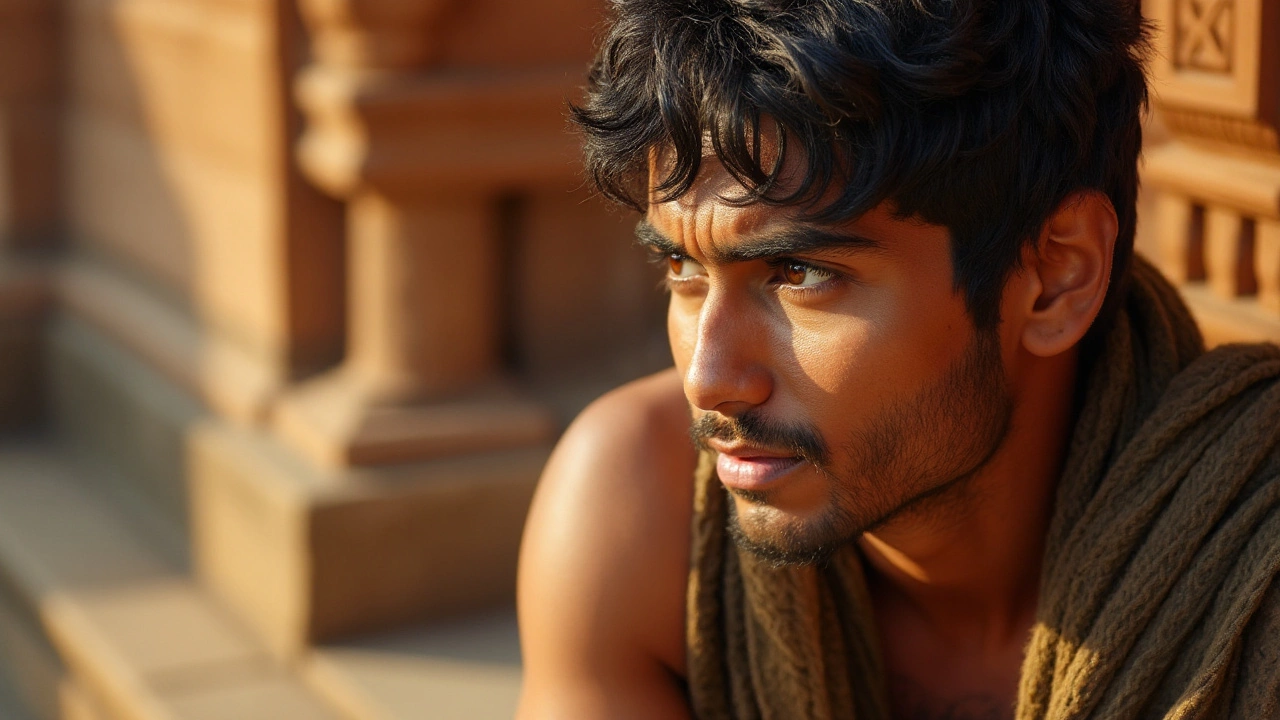
The Science Behind Attractiveness and Photography
When it comes to photogenic appeal in candid photography, the notion of attractiveness is an intriguing subject that encompasses various aspects of human perception and psychological triggers. Research suggests that certain facial features often considered appealing—such as symmetry, clear skin, and facial structure—can influence how an individual is perceived by the camera. Symmetrical faces are often deemed attractive as they may be easier for the brain to process, leading to a perception of charm and beauty. This preference for symmetry is hard-wired across many cultures, which is why it plays a pivotal role in how we view attractiveness, even in the context of candid shots.
However, it's important to note that being photogenic is not solely about having traditionally attractive features. The play of light, angles, and context significantly affects how an image turns out, especially in candid photography where spontaneity reigns supreme. The camera can often capture subtle expressions and fleeting moments that define one's character rather than their mere aesthetic appeal. This interplay between physical traits and the technical aspects of photography reveals that attractiveness is also about how well an individual’s features adapt to the camera’s eye. As Ansel Adams, a legendary photographer, once said,
"To photograph truthfully and effectively is to see beneath the surfaces and record the qualities of nature and humanity that live or are latent in all things."
Additionally, cultural influences play a significant role in defining who or what is considered attractive. In India, varying beauty standards—rooted in rich traditions and diverse ethnographies—paint a different picture than the Western ideals. What is revered in one culture might not hold the same sway in another, and this directly affects how photogenic someone appears. Studies in aesthetic appreciation show that attraction is not merely a biological inclination but is interwoven with social and cultural cues. This is why photographs of diverse individuals offer distinct stories, contributing to the universal language of photography.
Moreover, there is scientific evidence supporting the idea that some people project emotions through their expressions more effectively, making them seemingly more captivating in candid photos. These micro-expressions can convey sincerity, confidence, and empathy—all of which add to one’s attractiveness in a photograph. Studies have indicated that emotions such as genuine happiness reflected in a smile can enhance perceived beauty, illustrating that a photogenic quality is harnessed by the depth of emotion,” rather than just the surface level visual appeal. As such, capturing the right moment in candid photography can uncover the honesty and depth of human emotions, which is the essence of genuine beauty.
To explore these dynamics, researchers often utilize various methodologies, including facial recognition algorithms and psychological assessments. When looking at the statistical data, it becomes apparent that while facial features initially draw the camera’s attention, expressing authentic emotions is what often distinguishes a memorable photograph from an ordinary one. This understanding of the science behind attractiveness and its effect on photography underscores why some images resonate deeply with viewers, turning fleeting moments into lasting impressions. Hence, whether individuals are deemed traditionally beautiful or not, the key lies in the ability to reveal genuine connection and emotion through the lens—a skill every passionate photographer aspires to master.
Tips for Capturing Alluring Candid Shots
Capturing the perfect candid photograph might seem elusive, but with attention to detail and a bit of creativity, it can become second nature. When attempting to capture alluring candid shots, the environment and timing play crucial roles. The key is to blend into the surroundings, creating an atmosphere where subjects remain oblivious to the camera's presence. As a result, their movements and expressions are more genuine, lending authenticity to each photograph. The streets of cities like Mumbai offer a rich tapestry of stories waiting to be told, from vibrant markets to serene gardens. Utilizing natural light is an invaluable technique, as it enhances the emotional depth and warmth of the scene.
Adapting your camera settings to suit the unpredictable lighting conditions is vital. High ISO settings can help in low-light situations typically found indoors, while adjusting the aperture to achieve the desired depth of field ensures your subject stands out amidst the bustling background. Exploring various angles and perspectives can inject fresh life into your shots. Often, shooting from unexpected perspectives, like above eye-level or below the waist, creates a unique visual narrative. Spontaneity is the key to candid photography; always be ready, yet patient, as the perfect moment is as much about timing as it is about luck.
When photographing people who are considered distinctly attractive, the challenge lies in transcending their aesthetic appeal to depict their character and story. Rather than seeking posed perfection, aim for moments when their guard is down, and their true essence shines through. Keep a keen eye on body language and the interplay of gestures, as these often convey more than words can express. Being unobtrusive is about respect and consideration, and with experience, it becomes easier to anticipate a compelling moment before it happens.
Framing is another pivotal element that can transform an ordinary scene into a captivating image. Use natural frames like window panes, archways, or even shadows to add depth and intrigue. Here, the surrounding scene serves to draw attention to the subject without overpowering them. In candid photography, these elements should complement rather than distract, focusing the viewer's attention on the spontaneous moments captured. A photogenic moment is not only about visual appeal; it's about engaging the viewer, sparking curiosity about the story behind the image.
Embrace the imperfections that come with candid photography. Blurred backgrounds, motion trails, and even slight misalignments can contribute to the authentic feel of a photograph. This genre thrives on realism, so capturing what others might overlook becomes a powerful tool for storytelling. As legendary photographer Henri Cartier-Bresson once said, "To photograph is to hold one’s breath, when all faculties converge in the face of fleeing reality." This ethos is at the heart of candid photography—the art of seizing the fleeting, the unposed, the unrepeatable.
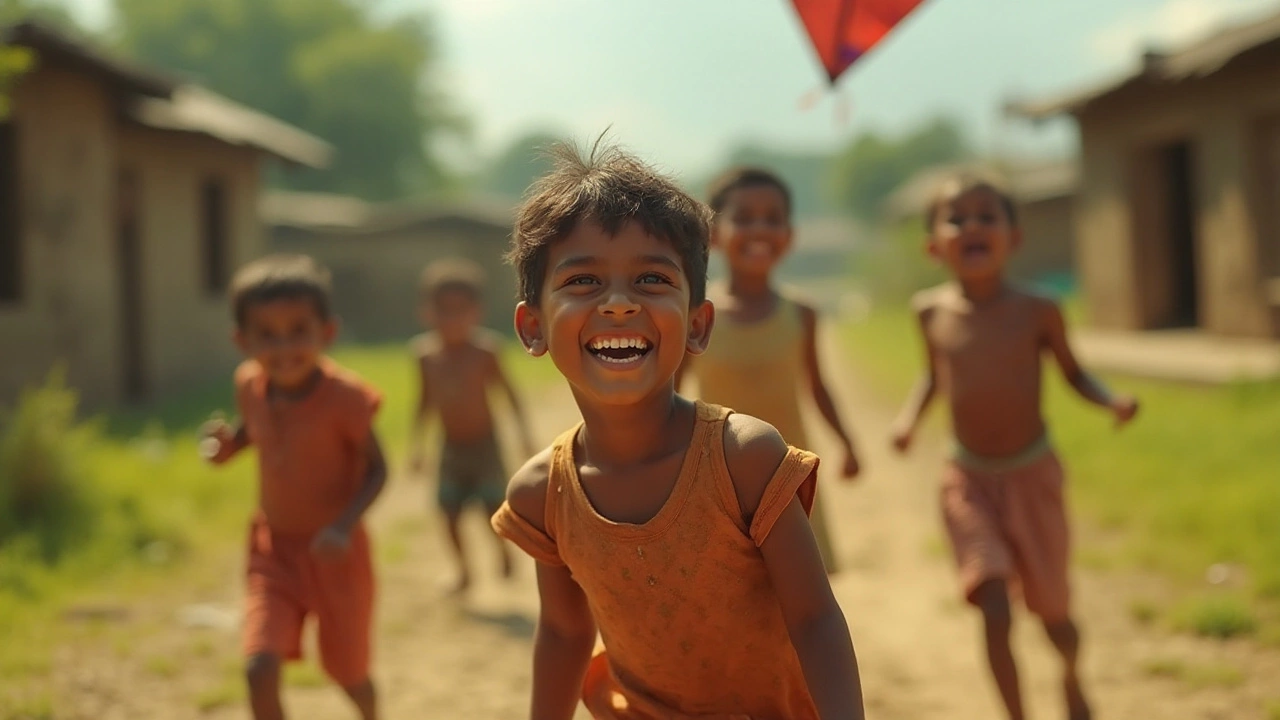
Embracing Authentic Beauty in Photography
In the relentless pursuit of capturing the perfect image, photographers often overlook the subtle imperfections that breathe life and character into a photograph. Embracing authentic beauty in photography means veering away from the airbrushed ideals of attractiveness and instead, honing in on the raw, unfiltered essence of the subject. In the realm of candid photography, this might involve capturing the fleeting moments of vulnerability or joy that aren't rehearsed. Such images possess an unmatched authenticity, enthralling the viewer not by the traditional standards of beauty, but by the story they tell and the emotions they evoke.
The cultural backdrop of India offers a rich tapestry where the concept of beauty isn't a monolith. Diverse customs and traditions provide a myriad of interpretations of what is considered beautiful. This is beautifully encapsulated by Bengali filmmaker Satyajit Ray, who captured the essence of the common people in their natural habitat in his iconic films. Under the blanket of candid photography, when viewed through the lens of cultural diversity, a villager's shy smile or a child's curious gaze unveils a side of beauty that is unpretentious and pure. Such images reveal genuine human connections, far removed from staged perfection.
Capturing this form of beauty involves a conscious effort on the part of the photographer to observe and immerse oneself in the present moment, seeing beyond the superficial. The power of being unobtrusive allows photographers to blend into the background, giving way to spontaneous interactions and unguarded expressions, which often make for the most potent images. An understanding of the instinctive interaction between light, setting, and emotion comes into play. These elements coalesce to create an image that is not just visually appealing but also deeply impactful.
Consider that the attractiveness of a candid photograph often lies not in its clarity or precision but in its ability to convey a fragment of life, as it was, untamed. In this respect, the beholder's perspective matters. Some might find a wrinkled street vendor immensely photogenic, whereas others might be drawn to the play of shadows and lights on a cityscape. The key lies in approaching subjects with respect and a desire to understand their story. As famed photographer Henri Cartier-Bresson once remarked, "The photograph itself doesn’t interest me. I want only to capture a minute part of reality."
Thus, when photographing in bustling cities like Mumbai, photographers should harness the city's vibrant energy and diversity. This city offers countless opportunities to practice the art of recognizing beauty in the ordinary — from the dexterous hands of a chaiwala crafting the perfect cup of tea to the intense concentration on the face of a child flying a kite. These examples demonstrate that candid photography, at its core, is an ode to authentic beauty, a medium that eternally celebrates the human spirit and its intricate charm.
